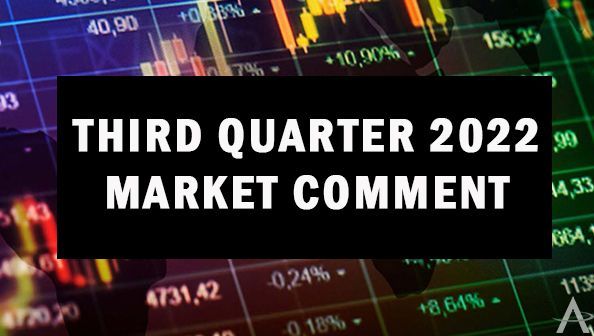Third Quarter 2022 Market Comment

The U.S. equity markets continued to fall as the third quarter of calendar year 2022 ended. We are in bear market territory with little encouraging economic news. The good news is that our portfolios are approximately fifty percent U.S. Treasuries with the majority invested in T.I.P.S., or Treasury Inflation Protected Securities. While the bond markets are also struggling to provide positive returns, these securities are now offering double-digit monthly income to offset the mildly lower returns offered by the current bond markets.
We anticipate the benchmark West Texas Intermediate crude price to go back up to $100 a barrel, up from the current $88 per barrel. This bodes well for our already positive investment in the energy sector yet will continue to exacerbate the 40-year high inflation rates.
With gasoline prices high for the average consumer, the real metrics are natural gas as winter approaches and diesel fuel prices. Diesel is the lifeblood of the trucking industry, ships at sea and much of rail traffic.
The bond markets continue to flash warning signs as the five and ten-year treasury notes are yielding more than the thirty-year bonds. This is out of sync as the shortest notes should provide less income and the longest should provide the most income.
The markets are forward looking and at some point, the calculated valuations of the markets when compared to today’s prices will signal long-term opportunities. The same holds true for economic data. We are looking for long-term opportunities and are entering partial positions knowing that we may add to them if the markets continue to fall. We do know that the markets were at historic highs just last year and history has taught us that the American economy has survived every challenge put forth.
Individual Retirement Accounts – Required Minimum Distributions
The beginning of the fourth quarter is the time we reach out to clients regarding their required minimum distributions. To recap, this is when the IRS requires owners of traditional IRAs to make a partial withdrawal which is treated as ordinary income. This does not apply to ROTH IRAs. An individual turning age 72 during calendar year 2022 can delay the first “required minimum distribution” (RMD) from pre-tax retirement plans until 3/31/2023, but then will need to take a second RMD as of 12/31/2023. The 2019 SECURE Act changed the age requirement to begin RMDs from age 70 ½ to age 72.
We are here to discuss this with you and run long-term model calculations for you, as well as work with your tax professional directly to serve you at a high level. As with all tax matters we recommend consulting a tax expert for details.
As always, please reach out to us with any questions. We appreciate the opportunity to serve you!




